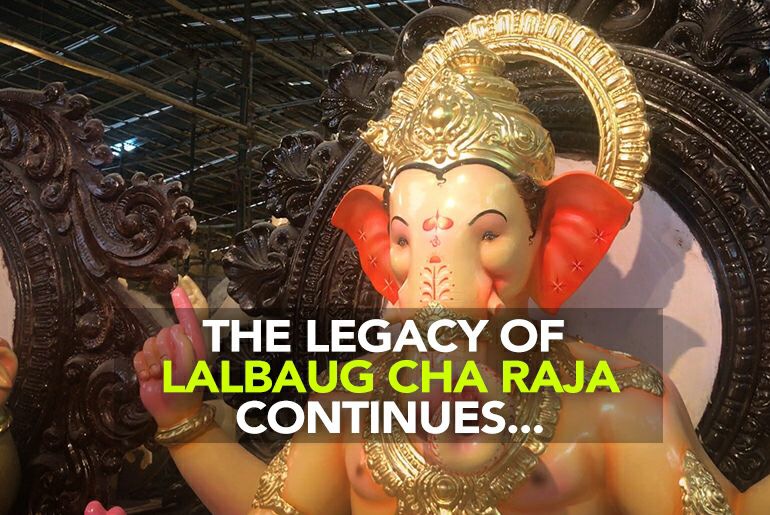Ganesh Chaturthi is just around the corner and the festivities at Lalbaug Cha Raja are in full swing. However, something will be amiss this year.
Vijay Khatu, the man behind creating the biggest Ganesha idol, Lalbaug Cha Raja passed away last month. In his career span of 50 years, Khatu had created more than 500 idols of which many were over a size of 25 feet! His sudden and sad demise has many wondering about the whereabouts of the Lalbaug Cha Raja murti this year.
Curly Tales decided to go to his own workshop, that’s located in the Parel Railway colony, and find out what stage the murti is in. After what seemed like hours of walking through the populous workshop and a number of inquiries with the local artisans, we managed to reach Reshma, the daughter of late Vijay Khatu, who told us that her father had completed almost 80% of the work, and that she was left with 20% of work to complete.
Khatu had trained his artisans well for years in his own workshop, and they were all passionate about what they were doing, given the heat and overcrowded conditions. Watching artisans do this with utmost care and expertise, was a delight in its own ways. Khatu’s workshop is known for sculpting for and delivering idols across Mumbai, Nashik and Pune.
The festival is well-celebrated all across the country, however, most grandeur is seen across the cities of Maharashtra. One is well aware of the fact that apart from the days when the festival is ongoing, Ganpati preparations require at least two months of arrangements and planning.
Also read: 5 Interesting Ways to Celebrate Rakshabandhan With Your Sister In Pune
Over a period of two months, hundreds of idols are made in batches. Once the idols acquire a proper shape, a whitewash coat is rendered. The idol is then left for drying till the second or third week of August. This is when the actual painting of the statues begins. It is only a few days before the festival that a majority of the idols are fully painted and given the final touch.The most absorbing or skillful area of work for artisans is in the synchronized painting of the eyes and adding a touch of divine expression to the overall face of the Ganpati.
The idol-making industry is unorganized and thus, makes it difficult to estimate the total number of idols made each year. It exists more like a cottage industry, and this is the time of the year when Ganesh idol artisans are at the busiest of times.
Also read: A Walk Through Kerala’s Snake Park On Nag Panchami
LIKE Curly Tales on Facebook | Instagram | Twitter
You can subscribe to our newsletters

